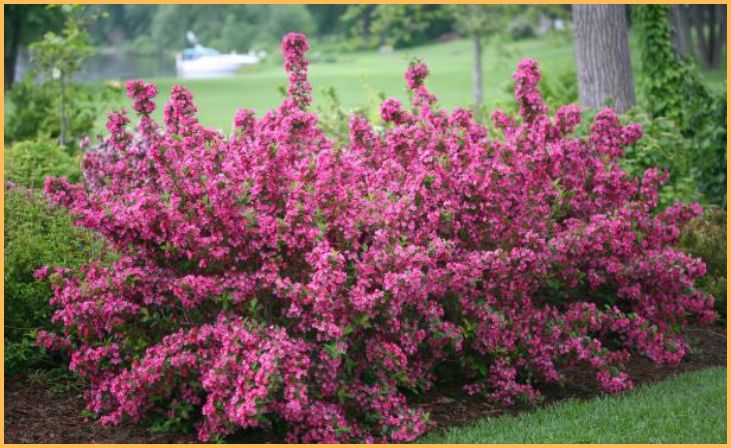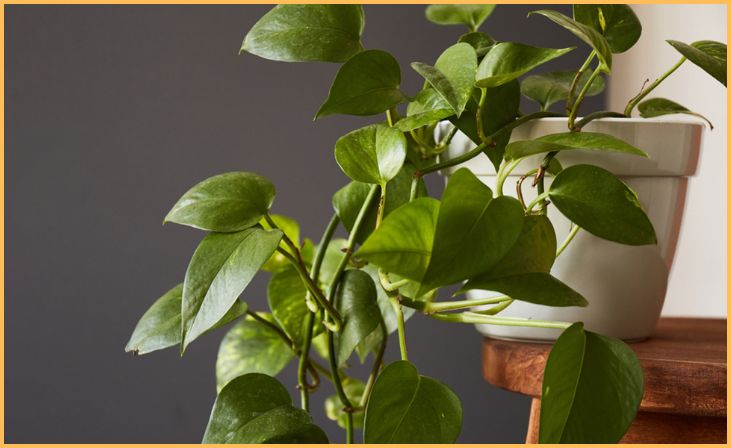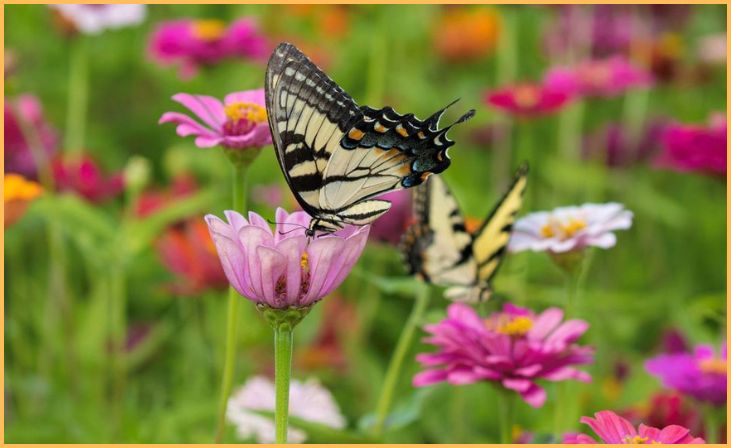Plants to Transform Your Garden – Transforming your garden with the right selection of plants is a transformative endeavor. It’s more than just aesthetics; it’s about creating a vibrant, sustainable ecosystem right outside your doorstep. Whether you’re looking to enhance the visual appeal, attract pollinators, or cultivate your own produce, the choices you make in plant selection are paramount.
In this guide, we’ll walk you through the process of creating a garden that suits your needs and desires. We’ll explore the criteria for selecting the ideal plants, delve into categories that can bring your garden to life – from aesthetically pleasing plants to those that beckon wildlife, and those that offer the sustenance of homegrown food.
We’ll also provide practical tips on planting and maintenance, and highlight some case studies and plant profiles to inspire your journey.
With the right knowledge and the right plants, you can transform your garden into a lush, thriving space that reflects your unique vision and enriches your connection to the natural world.
Importance Of Plant Selection in Garden Transformation
The importance of plant selection in garden transformation cannot be overstated. It plays a crucial role in achieving the desired aesthetics, functionality, and sustainability of your garden. Here are several reasons highlighting the significance of careful plant selection:
- Aesthetics: Plant selection is fundamental to the overall look and feel of your garden. The choice of colors, shapes, and sizes of plants can create specific visual effects and themes, whether it’s a formal, cottage-style, or wildflower garden.
- Functionality: Different plants serve various functions in a garden. For instance, trees and shrubs can provide shade and privacy, while groundcover plants help prevent soil erosion. Selecting plants that align with your garden’s intended purpose is essential.
- Environmental Compatibility: Plants must be compatible with the local environment, including hardiness zones, soil types, and climate conditions. Choosing plants that thrive in your region will reduce the need for excessive maintenance and resources.
- Ecological Impact: The choice of native plants can positively impact local ecosystems. Native plants support local wildlife by providing food and habitat, contributing to biodiversity, and attracting pollinators such as bees and butterflies.
- Maintenance Requirements: Different plants have varying maintenance needs. Selecting plants that match your available time and energy for gardening can save you from undue stress and work. Low-maintenance plants can be an excellent choice for busy individuals.
- Seasonal Interest: Strategic plant selection can ensure your garden remains appealing year-round. Consider incorporating plants with seasonal interest, such as those with vibrant spring blooms, summer foliage, or fall colors.
- Sustainability: Opting for drought-tolerant and water-efficient plants can help conserve water resources. Additionally, planting a mix of perennials and annuals can reduce the need for replanting each year.
- Wildlife Attraction: If you wish to create a garden that attracts wildlife, plant selection is essential. Choosing nectar-rich flowers, host plants for caterpillars, and berry-producing shrubs can make your garden a haven for birds, insects, and other animals.
Also, Read – Most Popular Types of Flowers
Plants to Transform Your Garden
Flowering Shrubs

Flowering shrubs can add color and texture to your garden. Consider these options:
- Hydrangeas: Known for their large, globe-like blooms, hydrangeas come in various colors, from vibrant blues to soft pinks. They thrive in partial shade and are great for creating a lush, classic garden.
- Forsythia: These early spring bloomers burst with bright yellow flowers, signaling the arrival of spring. Forsythias are easy to care for and bring a burst of color to your garden.
- Butterfly Bush (Buddleia): Attract butterflies to your garden with this fragrant, low-maintenance shrub. It’s available in a range of colors and blooms from late spring through fall.
These shrubs can transform your garden with their beauty and versatility, adding charm and interest to your outdoor space.
Perennials
Perennials are an essential component of any garden, offering enduring beauty and low maintenance. Here are a few perennial plant suggestions:
- Roses: Beloved for their classic and timeless beauty, roses come in various colors and styles, from climbers to shrub varieties. They add elegance and fragrance to your garden.
- Lavender: With its aromatic blooms, lavender not only provides a soothing fragrance but also attracts pollinators. This hardy perennial is ideal for both herb gardens and ornamental borders.
- Peonies: Known for their large, lush blooms, peonies are a garden favorite. They come in a variety of colors and create a stunning focal point in the garden, particularly in late spring.
- Daylilies: These versatile perennials offer a profusion of colorful, trumpet-shaped blooms. They are low-maintenance and thrive in various conditions.
- Sedum: Succulent and drought-tolerant, sedum provides unique texture and color. It’s an excellent choice for rock gardens and ground cover, coming in various varieties and hues.
These perennials are not only visually appealing but also provide lasting beauty, returning year after year to enhance your garden’s charm.
Native Plants
Native plants are essential for creating sustainable, low-maintenance gardens that support local wildlife and ecosystems. Here are some native plant options:
- Native Wildflowers: These low-maintenance plants, like Black-eyed Susans and Coneflowers, provide bursts of color and attract pollinators. They thrive in their natural environment and help conserve water.
- Native Grasses: Native grasses like Little Bluestem and Switchgrass are hardy, low-maintenance choices. They stabilize soil, reduce erosion, and provide shelter and food for local wildlife.
- Milkweed: Essential for monarch butterflies, milkweed plants are not only beautiful but also support declining butterfly populations. They come in various species and thrive in many regions.
- Oak Trees: Planting native oak trees helps sustain local ecosystems, providing food and shelter for countless wildlife species, from birds to insects.
- Bee Balm (Monarda): This vibrant, bee-friendly plant is a native favorite that attracts pollinators and enhances your garden with its colorful blooms.
By incorporating native plants, you can create a resilient, eco-friendly garden that contributes to the health of your local environment while requiring less water and maintenance.
Also, Read – Outdoor Hobbies for an Active Lifestyle
Edible Plants
Edible plants in your garden provide a fresh source of ingredients for cooking and can be a delightful addition to your landscape. Here are some edible plant options:
- Herb Garden: Create a dedicated herb garden with essentials like basil, rosemary, thyme, and mint. These herbs add flavor and fragrance to your dishes and are relatively easy to maintain.
- Vegetables: Plant a variety of vegetables such as tomatoes, peppers, cucumbers, and zucchini. These can be grown in garden beds, raised beds, or containers, depending on your space.
- Strawberries: These sweet, low-growing berries are perfect for edging garden beds and can even be grown in hanging baskets.
- Blueberries: Blueberry bushes provide delicious, antioxidant-rich fruit. They have attractive foliage and can be grown in acidic soil.
- Fruit Trees: If space allows, consider fruit trees like apple, pear, or cherry. They offer fresh, homegrown fruit for your family.
Edible plants not only provide fresh, nutritious produce but also add visual interest and a rewarding gardening experience to your outdoor space.
Ground Covers
Ground covers are excellent for creating low-maintenance, visually appealing landscapes. Here are some ground cover options:
- Creeping Jenny (Lysimachia nummularia): Its bright green, trailing foliage adds a pop of color and can cover garden areas with ease. It thrives in various soil conditions.
- Sedum (Stonecrop): These drought-tolerant succulents come in various colors and textures. They’re perfect for rock gardens, between stepping stones, or as a low-maintenance ground cover.
- Vinca (Periwinkle): This evergreen ground cover produces pretty blue or purple flowers and spreads rapidly, making it ideal for shaded areas.
- Thyme: Creeping thyme varieties, like woolly thyme or elfin thyme, create aromatic, dense ground covers that are perfect between pavers or in herb gardens.
- Ajuga (Bugleweed): Available in different colors and textures, ajuga forms a mat-like ground cover and is excellent for suppressing weeds.
Ground covers not only reduce maintenance by preventing weed growth but also enhance the aesthetic appeal of your garden, creating a lush, carpet-like look that’s both functional and beautiful.
Climbing Plants

Climbing plants add vertical interest and can transform walls, trellises, and arbors into green and flowering features. Here are some climbing plants:
- Clematis: With a wide range of colors and flower shapes, clematis is a popular choice. They can quickly cover trellises and arbors, providing a burst of color in your garden.
- Wisteria: These vigorous climbers produce cascades of fragrant, hanging blooms. They are perfect for creating a romantic and picturesque garden feature.
- Honeysuckle: Known for its sweet fragrance, honeysuckle vines attract pollinators. They are versatile and can be trained to climb fences, walls, or pergolas.
- Morning Glory: This fast-growing annual vine boasts vibrant, trumpet-shaped flowers that open in the morning and close in the afternoon. They’re perfect for a quick and colorful garden transformation.
- Passionflower: With striking, intricate flowers and edible fruits, passionflowers make for a unique and visually captivating addition to your garden.
These climbing plants not only add beauty and vertical interest but can also provide privacy and shade when strategically placed in your garden.
Also, Read – Stunning Flowers Across the Globe
Trees
Trees are the backbone of any landscape, providing shade, habitat, and aesthetic beauty. Here are some tree options:
- Japanese Maple (Acer palmatum): These ornamental trees are known for their delicate, colorful foliage and are perfect for adding an elegant touch to your garden.
- Dogwood (Cornus florida): With beautiful spring blooms and vibrant fall foliage, dogwood trees are both visually stunning and support local wildlife.
- Magnolia (Magnolia spp.): Magnolias are prized for their large, fragrant blossoms, adding a touch of sophistication to your garden.
- Oak Trees (Quercus spp.): Native oak trees provide essential shade, wildlife support, and long-lasting beauty.
- Birch (Betula spp.): Characterized by their striking white bark, birch trees create a dramatic focal point in the landscape.
- Maple (Acer spp.): Maples offer brilliant fall color and are a classic choice for a picturesque garden.
- Fruit Trees (e.g., Apple, Pear, Cherry): Planting fruit trees yields delicious, homegrown fruit and can be an attractive addition to your garden.
Choose trees that thrive in your region’s climate and consider their size at maturity to ensure they complement your garden’s design while providing essential benefits for years to come.
Fragrant Plants
Fragrant plants can elevate the sensory experience in your garden. Here are some options:
- Jasmine (Jasminum spp.): Known for its sweet, intoxicating fragrance, jasmine is a climbing vine that can be grown on trellises or arbors, filling the air with a delightful scent.
- Lilac (Syringa vulgaris): Lilacs produce clusters of fragrant, colorful blooms in the spring, adding charm and a pleasant aroma to your garden.
- Lavender (Lavandula spp.): This aromatic herb not only smells wonderful but also attracts pollinators and can be used for various purposes, from aromatherapy to culinary endeavors.
- Roses (Rosa spp.): The classic rose comes in a range of scents, from sweet and fruity to spicy and musky, adding elegance and romance to your garden.
- Gardenias (Gardenia spp.): With their creamy white, waxy blooms and sweet fragrance, gardenias are perfect for creating a lush, tropical atmosphere in your garden.
- Peonies (Paeonia spp.): These lovely, large blooms emit a sweet, subtle scent in addition to their aesthetic appeal.
Incorporating fragrant plants not only pleases the senses but also creates a relaxing and inviting atmosphere in your outdoor space.
Xeriscape Plants
Xeriscape plants are perfect for creating a water-efficient garden that thrives in arid or drought-prone regions. Here are some xeriscape plant options:
- Succulents: Drought-tolerant succulents like Agave, Aloe, and Sedum come in various shapes and colors, adding texture and flair to your xeriscape garden.
- Yucca: These hardy, sculptural plants require little water and create a striking focal point in your garden with their tall spikes of white or yellow flowers.
- Lavender (Lavandula spp.): Fragrant and drought-resistant, lavender attracts pollinators and adds color to your xeriscape garden.
- Sage (Salvia spp.): Salvias are not only drought-tolerant but also come in a variety of colors, attracting hummingbirds and pollinators.
- Penstemon: With its tubular flowers and adaptability, penstemon is a reliable choice for xeriscaping.
- Mexican Feather Grass (Nassella tenuissima): This ornamental grass creates graceful movement and texture in the garden while being highly drought-tolerant.
By incorporating xeriscape plants, you can conserve water and create a resilient and visually appealing garden in areas prone to drought or water restrictions.
Butterfly and Bee-Friendly Plants

Creating a garden that attracts and supports pollinators like butterflies and bees is not only environmentally friendly but also visually appealing. Here are some butterfly and bee-friendly plant options:
- Milkweed (Asclepias spp.): Essential for monarch butterflies, milkweed provides food and habitat for these iconic insects. It comes in various species and colors.
- Bee Balm (Monarda spp.): Bee balm’s vibrant, fragrant blooms attract both bees and butterflies while adding color to your garden.
- Coneflowers (Echinacea spp.): These drought-tolerant perennials have showy blooms that attract pollinators and come in a variety of colors.
- Liatris (Blazing Star): With its striking, spiky blooms, liatris is a favorite among bees and butterflies, and it thrives in sunny conditions.
- Butterfly Bush (Buddleia): As the name suggests, this plant is a butterfly magnet and comes in various colors, from purple to white.
- Salvia (Sage): Salvias produce tubular flowers that are highly attractive to pollinators and come in various shades.
By incorporating these pollinator-friendly plants into your garden, you can help support declining pollinator populations while enjoying a colorful and vibrant outdoor space.
Conclusion
In conclusion, the art of plant selection is the key to unlocking the full potential of your garden. By understanding the importance of aesthetics, functionality, and ecological impact, you can create a space that not only pleases the eye but also supports local wildlife and sustains itself with minimal effort.
With the right knowledge and choices, your garden can be a source of joy, beauty, and harmony, enriching your connection to nature and enhancing your outdoor living experience. Transform your garden wisely, and let it flourish as a testament to your vision and the wonders of the natural world.
FAQs
Native plants are those naturally occurring in a particular region. They are well-suited to local conditions, support local wildlife, and often require less maintenance.
Consider the sunlight exposure and soil type in your garden. Consult plant labels or a local nursery for guidance on plant requirements.
Some low-maintenance options include succulents, ornamental grasses, and native plants adapted to your area.

